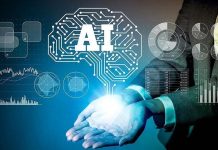Artificial intelligence (AI) has been entering different areas of our lives, systematically, for years. Today, the impact of AI can be found in business, healthcare, marketing, everyday life, and many other fields. Education is one of the sectors in which AI has managed to introduce drastic changes, and continues to do so. The impact of AI in the education sector is immense.
AI in education creates new opportunities for students, parents, and teachers. It makes education more accessible, engaging, and practical. This article breaks down how AI reshapes and impacts the education sector and provides examples of existing practices you’ll want to know about. Additionally, it’s essential to consider the resources available to students, such as dissertation consultancy, to ensure they can fully harness the benefits of AI in their educational journeys.
Here’s how AI influences the education sector.

Improved Learning
The learning process and preferences vary from one student to another. Yet, individualized and personalized learning is still not a standard in our schools. Most schools offer the same learning experience for entire classes of diverse students.
However, AI offers an opportunity to change this.
AI can be applied to the learning process. By collecting data, analyzing our behavior, and processing it all, AI can:
- define our learning preferences
- tailor the learning materials according to them
This way, two students will learn the same learning materials but through different types of exercises and content. This significantly improves the learning process, helping the students reach their academic goals faster and more successfully.
There are teacher assistant programs that use AI to help teachers customize the learning process for their students.
Accessibility
A decade ago, students didn’t have as much access to education as they do today. Part of this is thanks to AI and the educational technologies it uses.
Thanks to AI, students with different difficulties can still get the education they want. That includes students who are:
- visually impaired
- hearing impaired
- don’t have the desired learning opportunities in their country
- don’t speak the language
For instance, there are translation software students can use to receive an immediate translation of lessons and video classes they’re attending. This completely removes the language barrier for international students and makes education accessible.
Teacher Tasks Automation
Teachers have a tremendous amount of work outside the classroom, whether they’re pre-K or college level. There are tasks they have to complete, and for large groups of students, it could be extremely time-consuming.
But, with the help of AI, teachers can automate tasks such as:
- grading
- replying to students’ messages
- filling out student reports
- administrative work
For instance, teachers can use AI to grade multiple-choice or fill-in-the-blank type of tests. In the future, we could expect automation of grading students’ essays and more complex assignments.
And, by spending less time on this type of work, teachers have more time to address their students’ needs and come up with new ways of improving their teaching methods.
Smart Classroom
The newest generations of students are born with technology and are used to having it integrated into their everyday activities. Smart classrooms are thus far more engaging and productive for students than the typical classrooms we had five or ten years ago.
A smart classroom is a classroom that includes:
- digitized learning materials
- chatbots
- virtual reality
- gamification
- interactive exercises
Some teachers go as far as creating their own smart materials, while others use existing ones. Either way, students are motivated to learn and get actively engaged in the lessons.
This way, AI is creating an improved learning atmosphere for both students and teachers.
Tutoring & Additional Learning
For students in need of tutoring, AI brought positive changes too. There are AI tutors who can help students overcome different types of issues and struggle less with mastering the learning materials.
Today, parents don’t have to help their children with the tasks they don’t even understand Instead, they can go online and find:
- AI mentors
- test preparation videos
- homework explanations and presentations
Some schools and teachers even create their own tutoring materials to ensure students have access to tutoring and mentorship 24/7. This works for a variety of tasks, from simple algebra to complex essay writing. In case students need additional professional help with writing, EssayPro can help out.
Student Feedback
Remote learning is on the rise, and not only due to the COVID-19 pandemic. It’s simple- remote learning opens new doors to students and teachers from all over the globe and helps them connect around an educational goal.
AI can help teachers use the data produced during these online courses to:
- access the course success
- find gaps and errors in the course
- produce quality student feedback
That means that the teachers can better understand the quality of the materials they’re using. They can also improve it according to the needs of each group and get helpful feedback from the app or software they’re using.
Final Thoughts
Artificial intelligence is not the latest innovation or trend we’ve seen. It’s been around for years, but it’s still introducing valuable changes into our lives, especially in education.
Teachers, students, and parents all benefit from the positive impact AI has made in the education sector. With more learning opportunities and a better learning atmosphere, everyone is winning.
Jessica Fender is an educator and content writer at Writeload. She specializes in content related to the integration of technology and education, with the goal of helping education professionals improve their work.













